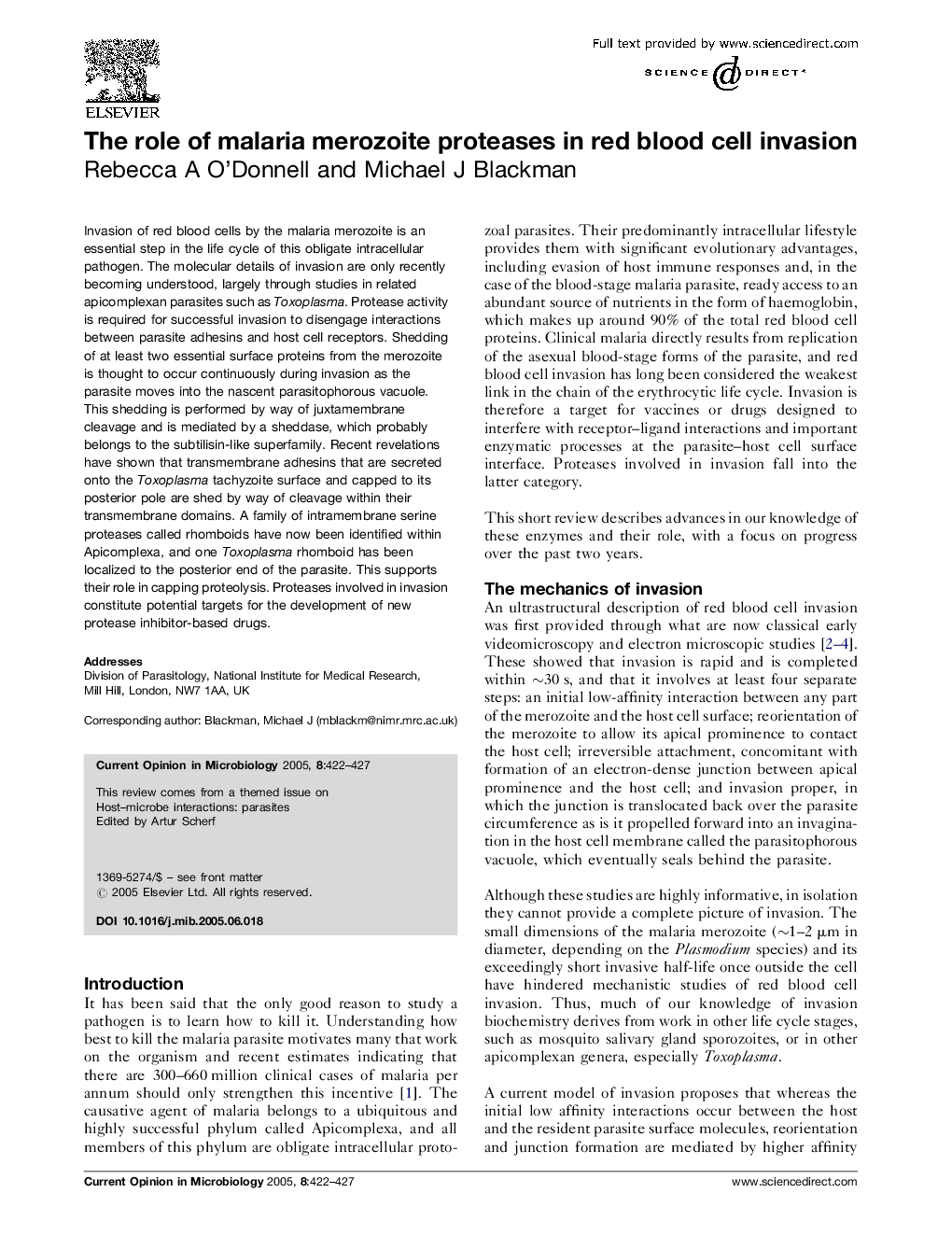| Article ID | Journal | Published Year | Pages | File Type |
|---|---|---|---|---|
| 9276659 | Current Opinion in Microbiology | 2005 | 6 Pages |
Abstract
Invasion of red blood cells by the malaria merozoite is an essential step in the life cycle of this obligate intracellular pathogen. The molecular details of invasion are only recently becoming understood, largely through studies in related apicomplexan parasites such as Toxoplasma. Protease activity is required for successful invasion to disengage interactions between parasite adhesins and host cell receptors. Shedding of at least two essential surface proteins from the merozoite is thought to occur continuously during invasion as the parasite moves into the nascent parasitophorous vacuole. This shedding is performed by way of juxtamembrane cleavage and is mediated by a sheddase, which probably belongs to the subtilisin-like superfamily. Recent revelations have shown that transmembrane adhesins that are secreted onto the Toxoplasma tachyzoite surface and capped to its posterior pole are shed by way of cleavage within their transmembrane domains. A family of intramembrane serine proteases called rhomboids have now been identified within Apicomplexa, and one Toxoplasma rhomboid has been localized to the posterior end of the parasite. This supports their role in capping proteolysis. Proteases involved in invasion constitute potential targets for the development of new protease inhibitor-based drugs.
Related Topics
Life Sciences
Immunology and Microbiology
Microbiology
Authors
Rebecca A O'Donnell, Michael J Blackman,
